& Construction

Integrated BIM tools, including Revit, AutoCAD, and Civil 3D
& Manufacturing

Professional CAD/CAM tools built on Inventor and AutoCAD
10 min read
You might have a negative or positive reaction to that word, depending on what side of the fence you’re sitting. But you can’t ignore that it completely alters the world whenever it happens. Disruption is the first man on the moon, or an artificial heart that extends life beyond its biological expiration, or even the whisper of an electric car rising steadily against an oil-crazed industry. No one sees it coming, but when it does, everything is changed.
Traditionally, the EDA industry has not been known to be disruptive. Like other conservative groups, the status quo in electronics design has been held constant for decades. Or has it? That depends on your perspective. The EDA industry as you know it might already be changing, and you’ll find examples of disruption in our industry and others spanning the timelines of history.
Ever heard of the Southwest Effect? This one event forever altered the way the airline industry operates, all thanks to Southwest Airlines and their innovative way of doing business. What did they do? Southwest introduced a new business model to the giants of the airline industry that ultimately tipped the balance of market share and power in their favor. But their business model was so simple that many were astounded it hadn’t been tried before.
When Southwest entered a new market, strange things started to happen:
Don’t believe us? Check out the graph below. In 1990 Southwest entered into the Oakland to Burbank market. Prices plummeted. And by the first quarter, the number of passengers flying this route increased over 400%!
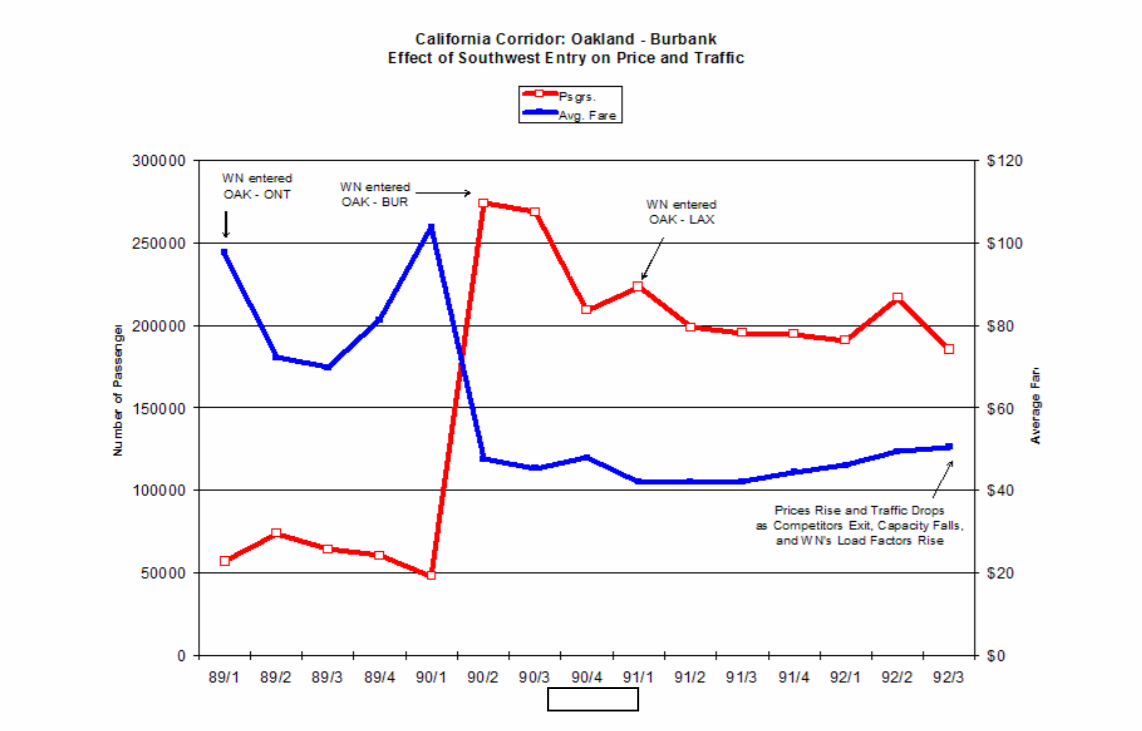
Southwest played a gamble, took a stab where no one else was willing to take the risk, and it paid off. And today, Southwest is still the nation’s largest carrier for domestic passengers in the United States. Why? Because they chose to disrupt the status quo of the airline industry back in 1990, and now they’re reaping the rewards.
Today, all Southwest has to do is announce that they are entering into a marketing and the price goes down before they actually sell one flight.
That’s the power of disruption.
While Southwest’s primary weapon for disruption was the altering of market forces with lower prices, disruption in the computing market was a bit more subtle. Rather than fiddling with prices, Texas Instruments chose to disrupt the world of computing forever with the power of new ways of looking at old problems. Enter Jack Kilby, the inventor of the first integrated circuit.
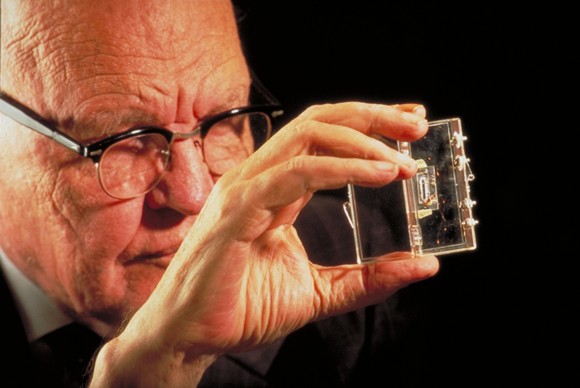
Computing as we know it would never be where it is today were it not for Jack Kilby’s invention. Before his time, engineers all over the world were at a standstill. We had the transistor which completely revolutionized electronic devices. But while they were innovative, the transistors introduced by Bell Labs in 1950 were still power hungry and were too large to ever fit inside today’s paper thin devices.
So Texas Instruments began to look for a solution to this problem. They started hiring droves of engineers all over the United States to find a different way. Some thought the solution was to have all the parts of a circuit pieced together in equal size and shape, but Jack Kilby had a different idea. He was an innovator.
Kilby ingeniously designed a method to fabricate all of a circuit’s components, from capacitors to resistors and transistors, all on the same block of silicon material. Why had nobody thought of this before? It was revolutionary. The first idea for the integrated circuit was penned by Kilby in a notebook on July 24, 1958, and the world of computing has never been the same. Why? Because one man chose to think differently, and in the process, he disrupted our entire world.
But what about the EDA Industry? It seems like our tools change at a snail’s pace. Have we ever been witnesses to disruption in our own domain?
There’s no denying that the EDA industry has changed since its beginning in the 80s. If you were engineering back then, you definitely weren’t doing it on a computer. Tape, mylar, and that sturdy draftsman table defined the engineering process. Entire printed circuit boards were created from physical bits of paper and strings of tape.
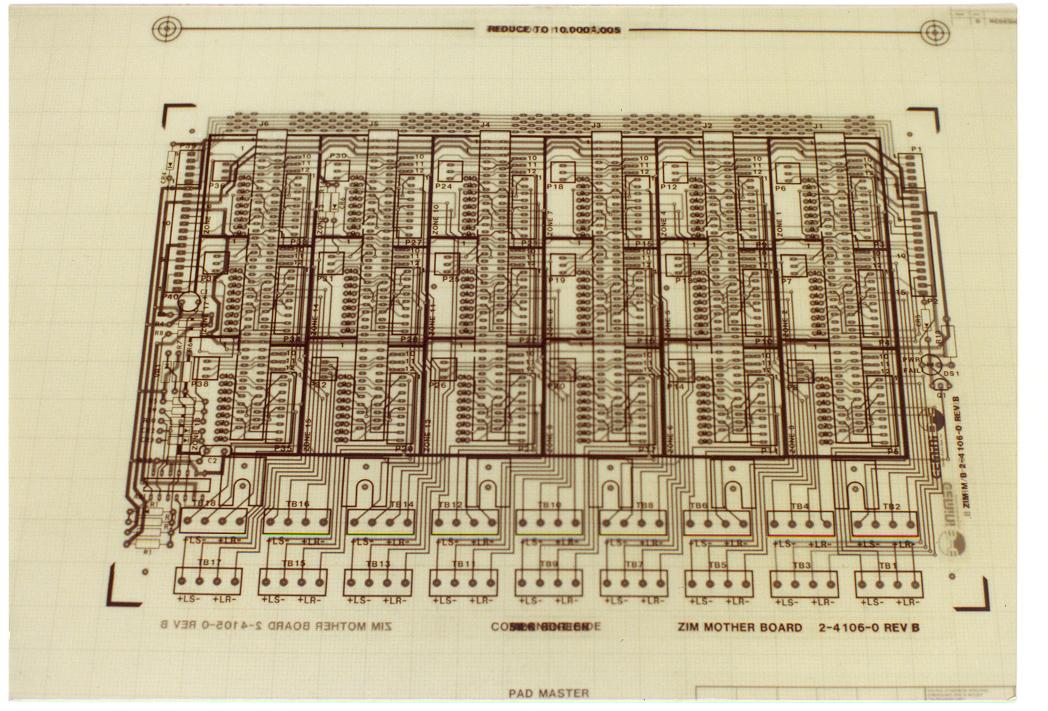
But then things changed, the world went digital, and so did the way we designed electronics. While some might say the disruption arrived when PCB design tools arrived on Windows, that was just a step along the path. The actual disruption was making our new world of digital PCB design tools accessible to every engineer, not just those with the most amount of money. And this is where EAGLE comes into the scene.
EAGLE published back in 1988 as a 16-bit application for Microsoft DOS. It was free then and still is over 30 years later. Our original vision that we set out to achieve was to provide electronics design software that was accessible to every engineer. Not just those with the biggest budget. We all knew investing in a computer took enough out of the wallet back in those days.
And so from the very beginning, EAGLE lead the way. We didn’t disrupt the market by offering the lowest prices; we disrupted the market by removing the issue of cost entirely. And in the process, we made PCB design software accessible to every engineer, everywhere. We were planting seeds in engineering communities from the ground up. Because we knew one day, there would be millions of you like there is today, and no other EDA tool can even come close to that.
Try looking around for a PCB design tool that works on Windows, Mac, and Linux, and you’ll be hard pressed to find an alternative. We were the first professional ECAD tool to become available for Linux at a time when everyone was obsessed about Windows. And we extended our community even further with support for Mac OS X with EAGLE version 4.13.
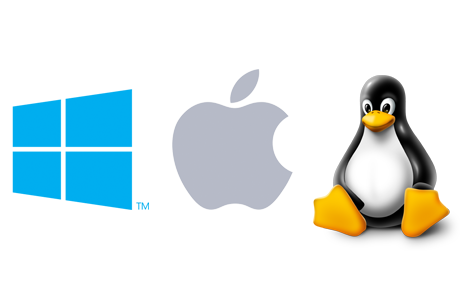
Why even bother making a multi-platform tool? Because we recognized early on that operating systems are a unique identity to each and every engineer. We all have our personal preferences for what interface we desire to work in, but that should never stop us from using our preferred tools as well. After all, at the end of the day, we’re all designing electronics, right? We’re all one huge, connected family, and so our software should reflect this mentality. And at a time when Windows seemed to be the only avenue to get PCB design software, we disrupted the EDA market by making our software available on any platform whether that’s Windows, Mac, or Linux. Your choice.
Our goal has never been to create a closed architecture, like other design tools. And the only way we’ve found success in being available on every platform is by supporting an open, human-readable XML file format. You can pry our file format open, take a peek inside, and make changes as you see fit. This flexibility and transparency also allow us to easily connect to other engineering ecosystems out in the world. You can do what you please with an XML file, connect it to your proprietary system and back again. We don’t care, so long as it makes your life easier on whatever OS you’re working.
Integration between schematic and PCB has always been a dividing point for most EDA tools. You’ll find a bunch of specialized software out there that can do some great schematic work or some great layout work. But where’s the beauty and elegance of merging those two domains together as they’re meant to be? Real design integration shouldn’t require a separate Engineering Change Order (ECO) each time you want to make a change between your schematic and PCB. It has the changes you make in your schematic automatically reflect in your layout.
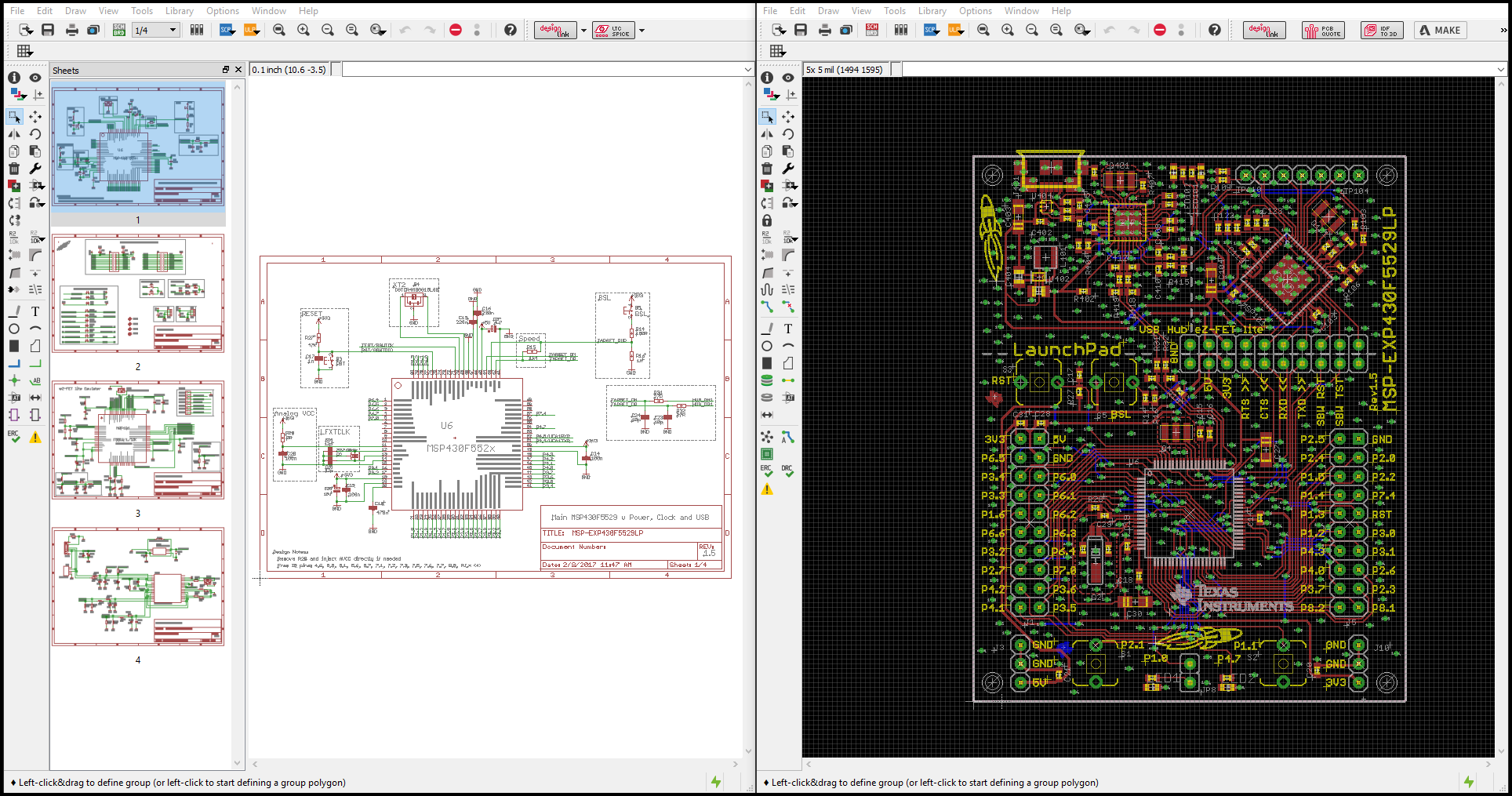
This is what we believe true integration is. When you make a change in an EAGLE design project, every change is synced between your schematic and board layout when it happens, no exceptions. There’s no button to push, no dial to turn. We’re all multi-dimensional engineers, doing both schematic and layout work, all making one project. Our tools need to reflect the back and forth dance that we all do between schematic and PCB in our everyday engineering. We didn’t set out to unify two things that were once separate. In EAGLE, schematic and PCB has always been one and the same since the beginning, as it should be.
We have carved out our little slice in history. After 30 years of working on our own, we joined the family at Autodesk. This is the best thing that could have happen to us and EDA. The industry needs change now more than ever. We’re in a period of stagnation with our design tools. And we’re tired of seeing engineers have to pay thousands just to get access to the technology they need to develop. To fix this problem, we needed some much-needed support from Autodesk.
We developed with a plan, to redefine the Southwest Effect, only in our industry. For 30 years EAGLE has been available as a pay once, perpetual license. When a new update rolled around in two years, you had to pay again. This cycle of paying and updating doesn’t line up with how software is developed today. Updates come more frequently, new feature cycles are more often, and the EDA industry as a whole needs a new financial model to keep up.
This is why EAGLE, after 30 years, was made available as a subscription.
We’re challenging the EDA industry head on. We’re looking at all of those giants of the industry and challenging them to do something different, starting with the affordability of their tools. We think every engineer should have the ability to design with the latest technologies, all for less than $1000. Not $10k, not $50k, less than a grand. With that kind of price point, we’re able to reach nearly everyone. All around the world we’re seeing engineers design electronics for the future of IoT and high-speed design, all for only $65/month.
This is disruption.
By making technology accessible through affordability. The only way to force a change in an industry, by pushing it yourself, by challenging the status quo, and that’s what we’re doing with the Autodesk EAGLE Subscription. And we will watch the rest of the EDA industry try to play catch up. They’ll all have to go through the same growing pains that we did. How do you go multi-platform with decades of Windows-specific code? Or revert to a sales model that puts choice back in the hands of engineers instead of sales teams? That’s going to take a long, long time for some of the big players out there.
There are going to be some rough times ahead for those that didn’t disrupt the EDA market like we did. Because when you aren’t a disruptor, then you’re just a follower, and you’re always struggling to play catch up. That’s exactly where the industry is right now. Find us another PCB design tool that’s multi-platform, forever free, and offers real design integration. Find us another PCB design tool that provides all of the technology you need to design IoT and high-speed devices the future at a fraction of the price. There isn’t one. This is the EAGLE effect, and we’re here to change the EDA industry through the simple yet powerful process of disruption. It’s already happening, just look around you.
So are you tired of overpriced software? Are you tired of not being able to work on your OS of choice?
We are.
Let’s do something about it. Try Autodesk EAGLE for free today.
By clicking subscribe, I agree to receive the Fusion newsletter and acknowledge the Autodesk Privacy Statement.
Success!
May we collect and use your data?
Learn more about the Third Party Services we use and our Privacy Statement.May we collect and use your data to tailor your experience?
Explore the benefits of a customized experience by managing your privacy settings for this site or visit our Privacy Statement to learn more about your options.